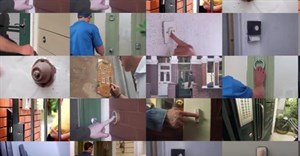Trending
[Design Indaba 2013] Music of the spheres
Alexander Cheng (@alexanderchen), an interaction designer and creative director of Google, visualises the mathematics of music by enabling a virtual line on a screen to sound when rolled over with a mouse, creating, to all intents and purposes, a representation of a real plucked string. Expanding this concept out to make sound out of any collection of scribbled lines (www.work.chenalexander.com).
A most memorable example of his tech is the Google doodle from 9 June 2011, which enabled all who visited the search engine on that day to pay tribute to American blues guitarist Les Paul, on the occasion of his 96th birthday, by plucking the virtual strings of the Google logo to create a song (www.google.com).
The measurability of the digital realm reveals that, on that day, 40 million songs were generated and 5,1 years worth of music was shared, causing 5,4 million hours of lost productivity.
The similar technology allowed the 1978 Massimo Vignelli map of the New York Subway "to play itself", as the visualisation of the trains crossing each other in real time, generates the unique sound of the subway. Check out the absolute wow of it at www.mta.me.
Through the looking glass
Also see g.co projectglass which takes digital social media lifestyles to the hands-free edge, recording everything the user does, connecting everything, communicating anything, sharing with anyone. Get a tantalising glimpse of the future:
Is this the very essence of reductive thinking, removing the need for glasses, phones, pads, cameras and location finding devices at a stroke? Follow @projectglass to check the progress.
Soul music
Experiments with music and the human body were presented by Eindhoven Design Academy graduate PieterJan Pieters, founder of OWOW (the omnipresent world of wiz kids), who questions the difficulty of mastering traditional instruments to produce music, digitises simple devices that can be attached to the human body and motion sensor technology that imbue digital sound with real human heart and soul. (www.designboom.com)
Big in Japan
Later in the day, Design Indaba delegates were treated to another designer marrying music and new technology - as Masashi Kawamura, creative director of Tokyo based creative lab showed the recording of the absolutely awesome "SOUR (Hibi no neiro)" using Skype as a filmmaking and choreographic tool and another example of human tech interfacing in the Music saves tomorrow dancing sperm project - designed as a positive expression of children being the future in response to the 3/11 Japanese earthquake tragedy.
Kawamura, or Masa, as he prefers to be called, repeatedly succeeds in turning the communication model on its head by not only creating new tools and genres for his music videos but also recording their experimental behind-the-scenes processes to generate unprecedented geek viral phenomena and fans.
Music reveals new avenues of design expression - from the virtual line simulations that mimic the harmonic mathematic ratios of nature to the rhythms of the human heart, a new crop of audiovisual afficionados use music to erase any preconceived limitations of their media.
For more:
- Bizcommunity Special Section: Design Indaba
- Bizcommunity Search: Design Indaba
- Bizcommunity Galleries: Design Indaba
- Bizcommunity Twitterfall: Design Indaba
- Design Indaba website: www.designindaba.co.za
- Facebook: Design Indaba
- Twitter: @DesignIndaba
- Twitter Search: Design Indaba OR designindaba OR DI2013
- Google News Search: Design Indaba












![[Design Indaba 2013] Music of the spheres](https://biz-file.com/c/1302/125625.jpg)
![[Design Indaba 2013] Music of the spheres](https://biz-file.com/c/1302/125627.jpg)
![[Design Indaba 2013] Music of the spheres](https://biz-file.com/c/1302/125629.jpg)
![[Design Indaba 2013] Music of the spheres](https://biz-file.com/c/1302/125631.jpg)

